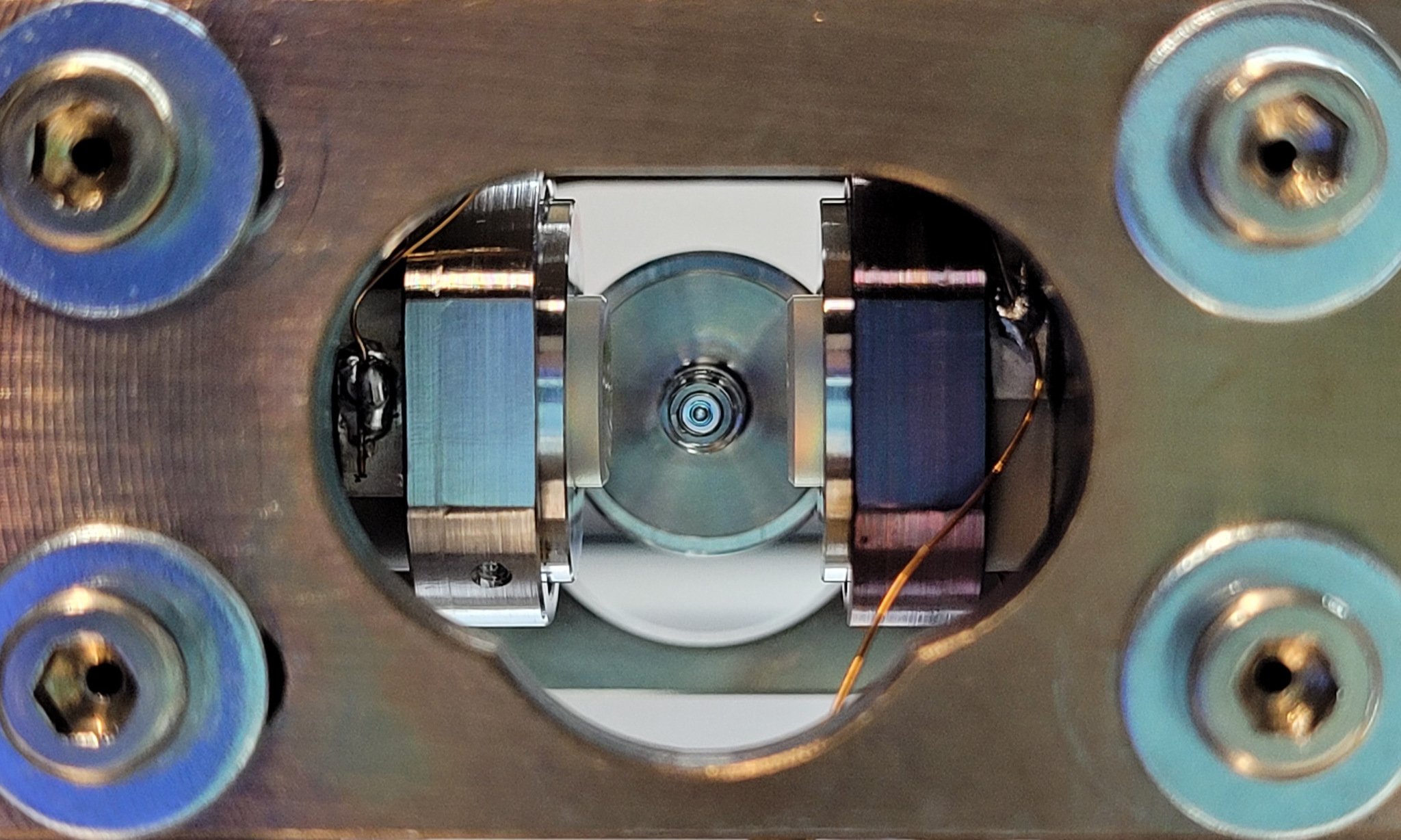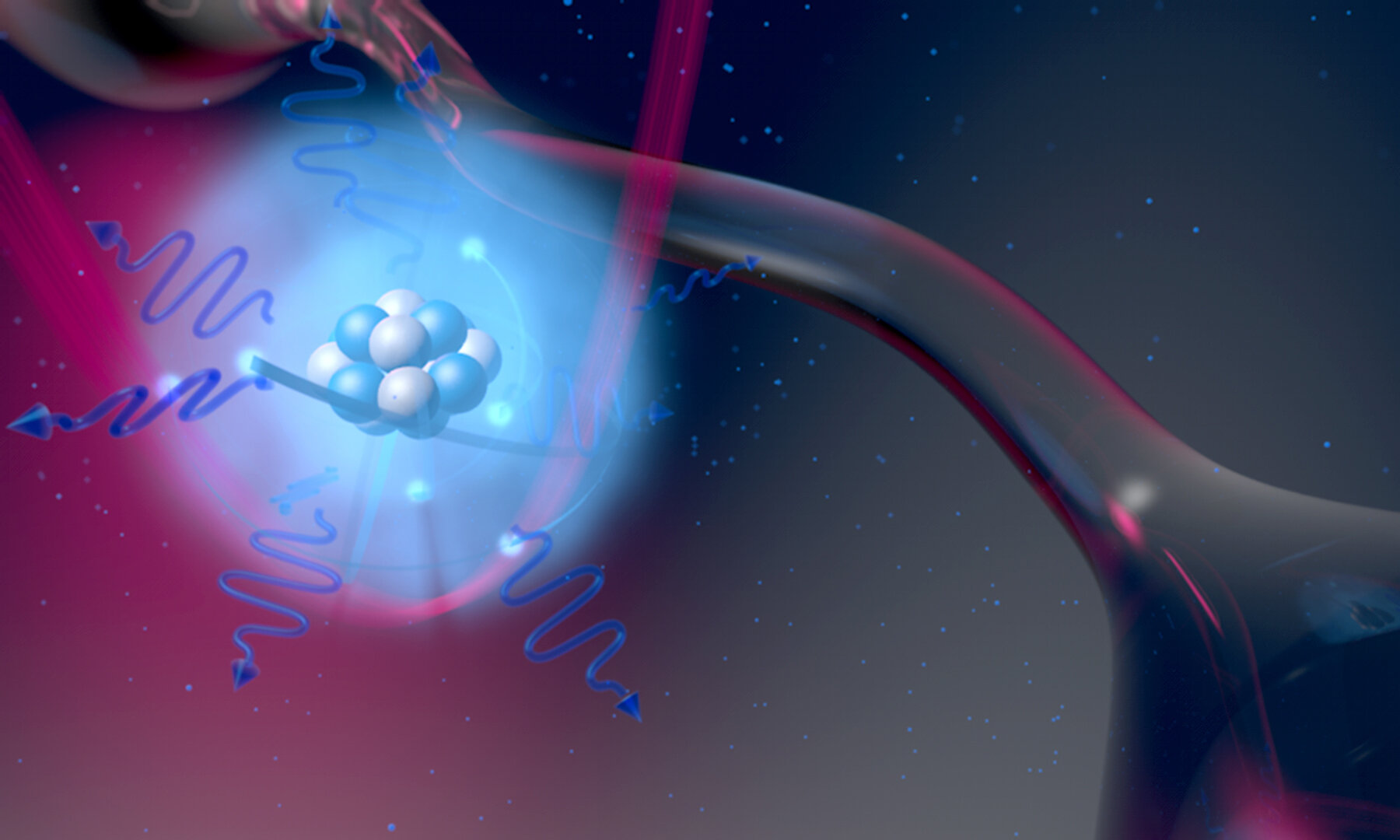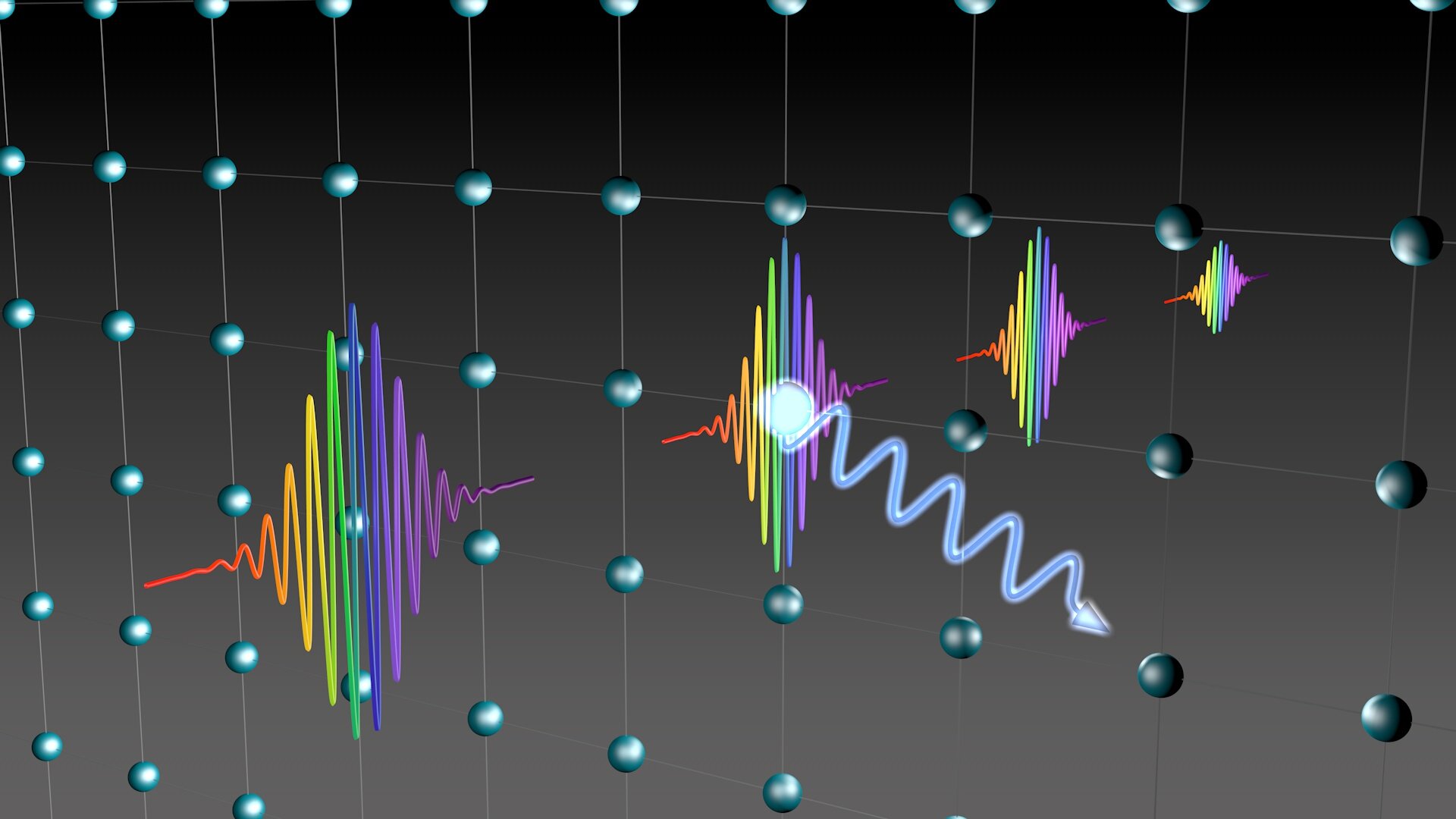
Press Releases

Observing macroscopic quantum effects in the dark
The boundary between everyday reality and the quantum world remains unclear. The more massive an object, the more localized it becomes when being made quantum through cooling down its motion to the absolute zero. Researchers, led by Oriol Romero-Isart from the Institute for Quantum Optics and Quantum Information (IQOQI) of the Austrian Academy of Sciences (ÖAW) and the Department of Theoretical Physics at the University of Innsbruck, propose an experiment in which an optically levitated nanoparticle, cooled to its ground state, evolves in a non-optical (“dark”) potential created by electrostatic or magnetic forces. This evolution in the dark potential is expected to rapidly and reliably generate a macroscopic quantum superposition state.

Two-Dimensional Quantum Freeze
Researchers at ETH Zurich and TII Abu Dhabi, with the support of quantum optics theorists from Innsbruck, Austria, have succeeded in simultaneously cooling the motion of a tiny glass sphere in two dimensions to the quantum ground-state. This represents a crucial step towards a 3D ground-state cooling of a massive object and opens up new opportunities for the design of ultra-sensitive sensors.

A Quantum Video Reel
When it comes to creating ever more intriguing quantum systems, a constant need is finding new ways to observe them in a wide range of physical scenarios. JILA Fellow Cindy Regal and JILA and NIST Fellow Ana Maria Rey have teamed up with Oriol Romero-Isart from the University of Innsbruck and IQOQI to show that a trapped particle in the form of an atom readily reveals its full quantum state with quite simple ingredients, opening up opportunities for studies of the quantum state of ever larger particles.

Microcavities as a sensor platform
Sensors are a pillar of the Internet of Things, providing the data to control all sorts of objects. Here, precision is essential, and this is where quantum technologies could make a difference. Researchers in Innsbruck and Zurich are now demonstrating how nanoparticles in tiny optical resonators can be transferred into quantum regime and used as high-precision sensors.

Levitated particles take off
In a review in Science, a team led by ERC Synergy Grant awardees Markus Aspelmeyer, Lukas Novotny, Romain Quidant and Oriol Romero-Isart explores the potential of the new research field of levitodynamics. This offers a new experimental platform with unique opportunities for fundamental science and many potential applications such as sensor technology.

Quantum Particles: Pulled and Compressed
Only recently researchers have levitated and cooled nanoparticles into the quantum regime. An Austrian research team led by Oriol Romero-Isart now proposes a way to harness the quantum properties of such particles before they lose them due to decoherence. To this end, the wave function of the particle is repeatedly expanded and compressed in a loop.

Remote Control of Quantum Emitters
Quantum technologies are enabled by precise control of the state and interactions of individual quantum objects. Innsbruck physicists have now proposed a way to remotely control the state of individual quantum emitters. The underlying idea, developed by a research group led by Oriol Romero-Isart, is based on chirped light pulses. This novel approach could become a relevant asset in quantum computers and quantum simulation in the future.

13 million euros for basic quantum research
The Austrian-based quantum physicists Oriol Romero-Isart and Markus Aspelmeyer, together with Lukas Novotny and Romain Quidant from ETH Zurich, will receive one of the prestigious ERC Synergy Grants. Together they want to explore the limits of the quantum world by positioning a solid-state object containing billions of atoms at two locations simultaneously for the first time.

Cooling magnets with sound
Today, most quantum experiments are carried out with the help of light, including those in nanomechanics, where tiny objects are cooled with electromagnetic waves to such an extent that they reveal quantum properties. Now, a team of physicists led by Oriol Romero-Isart at the University of Innsbruck and the Austrian Academy of Sciences is proposing to cool microparticles with sound waves instead.

Atoms don't like jumping rope
Nanooptical traps are a promising building block for quantum technologies. Austrian and German scientists have now removed an important obstacle to their practical use. They were able to show that a special form of mechanical vibration heats trapped particles in a very short time and knocks them out of the trap.

First diode for magnetic fields
Innsbruck quantum physicists have constructed a diode for magnetic fields and then tested it in the laboratory. The device, developed by the research groups led by the theorist Oriol Romero-Isart and the experimental physicist Gerhard Kirchmair, could open up a number of new applications.

Nanomagnets Levitate Thanks to Quantum Physics
Quantum physicists in Oriol Romero-Isart’s research group in Innsbruck show in two current publications that, despite Earnshaw’s theorem, nanomagnets can be stably levitated in an external static magnetic field owing to quantum mechanical principles. The quantum angular momentum of electrons, which also causes magnetism, is accountable for this mechanism.

Physicists Design Ultrafocused Pulses
Physicists working with researcher Oriol Romero-Isart devised a new simple scheme to theoretically generate arbitrarily short and focused electromagnetic fields. This new tool could be used for precise sensing and in microscopy.

Ultrashort and Extremely Precise
A group of theoretical physicists headed by Oriol Romero-Isart observes a surprising quantum effect when short light pulses interact with matter. In the future, this effect may be used for developing a completely new type of far-field light nanoscopes.

Forbes Recognizes Innsbruck Physicist
Innsbruck is a place that attracts the most intelligent thinkers in Europe. One of these bright minds, Jordi Prat-Camps, has just made it onto the American economic magazine Forbes’ 30 Under 30 Europe lists of ground-breaking leaders. The physicist, a graduate from Barcelona, started working as a researcher at the Institute for Quantum Optics and Quantum Information (IQOQI) in Innsbruck last year.

International Award for Oriol Romero-Isart
Oriol Romero-Isart is awarded the QIPC Young Investigator Award 2015 for his seminal contributions to many interdisciplinary topics in quantum physics, this week in Leeds, Great Britain. This international award, valued at Euro 4,000, goes to successful junior scientists and is awarded every two years.

Consonance between Micromechanics and a Circuit
In the journal Physical Review Letters, Gerhard Kirchmair’s and Oriol Romero-Isart’s research team has presented a new proposal for the coupling between a micro-mechanic oscillator and a superconducting quantum circuit. The experiment will soon be implemented in Innsbruck, offering new insights into the quantum properties of macroscopic mechanical systems.

Innovation: Magnetic Field Conductors
A Catalan, German and Austrian group of physicists has developed a new technology to transfer magnetic fields to arbitrary long distances, which is comparable to transmitting and routing light in optical fibers. Oriol Romero-Isart and his colleagues have theoretically proposed and already tested this new device experimentally. The field of possible applications is broad and includes spintronic and quantum computers among others.

Trapping Atoms With Vortices
In Physical Review Letters ERC awardee Oriol Romero-Isart and his colleagues have published a new model for a quantum simulator. In addition to the established techniques based on laser light, they want to establish a new approach based on perforated superconductors and magnetic fields to conduct quantum mechanical experiments.

Oriol Romero-Isart Receives ERC Grant
In October 2013, young Catalan physicist Oriol Romero-Isart will add his expertise to the Innsbruck quantum physics community. Shortly after his recruitment to the University of Innsbruck, Austria, he received one of the most highly valued European research grants: an ERC Starting Grant. The physical theorist will study the control and manipulation of quantum systems through magnetic fields and superconductors.
